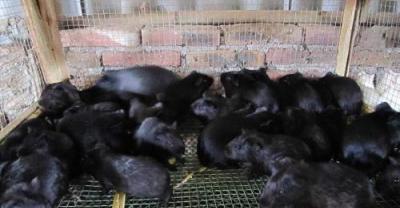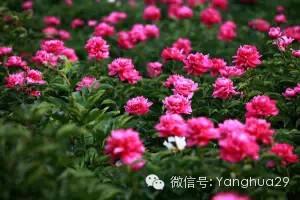Introduction to several kinds of special poultry breeding
With the gradual improvement of people's living standards and the increasing demand for game food in the catering industry, developing special aquaculture to fill the market gap is a better option in the aquaculture industry.
1.
Turkey (also known as Tushuo chicken), native to North America, has been domesticated and raised by humans for more than 400 years. The turkey is thin, tender and delicious. It is an excellent delicacy. At present, turkeys have been all over the world, and many countries have raised a large number of turkeys, which has become an important source of human meat. Raising turkeys has the advantages of less labor, simple equipment, low material consumption and low cost. Raising turkeys in rural areas is a way to get rich with small costs and big profits. The appearance of a turkey is different from that of a chicken. It is tall and tall. Some breeds are up to 1m tall and have well-developed muscles in the chest and legs. The head and neck are almost featherless and bald, with a coral dermatoma on the head. The color of the dermatoma often changes, it is red when it is quiet, and becomes blue-white or purple when excited. The color of feathers varies from variety to breed. Adult male turkeys have a fleshy beard hanging down or covering the beak, and coral dermatomas on the neck and under the beak are particularly well developed; feathers are shiny, there are whisker hairs on the chest, and tail feathers are well developed, which can be fanned, such as peacocks; distances are on the shins. The female hair chicken head is small, has a flesh crown in front of the forehead, the skin tumor is small, the individual is also smaller than the male turkey, and there is no distance on the shin, and the tail feathers do not spread. There are many kinds of turkey, such as Nikolai turkey, Betina turkey, bronze turkey and so on. Bronze turkeys are domesticated from wild turkeys. It has been raised for about 150 years in our country. It is characterized by strong adaptability, resistance to rough feeding, suitable for grazing, rapid weight gain, strong cold resistance and disease resistance. The ability of mating, laying eggs and self-hatching is strong. It is the most suitable for free farming in rural areas in our country.
two。 Chrysolophus pictus
Red-bellied Caragana (White-bellied Caragana), also known as golden pheasant, bird class, pheasant family, is one of the most beautiful, beautiful and magnificent species of pheasants. The feathers of its male birds are wonderful and breathtaking. It is a unique precious species and specialty in China, a world-famous ornamental rare bird and a rare mountain game. It is rarely listed in the domestic market, and it is a rising star in rare poultry breeding. The species of Caragana can be divided into Red-bellied Caragana and White-bellied Caragana. White-bellied Caragana is as white as snow, showing a light, elegant and fragrant posture; red-bellied Caragana has golden belly, thick clothes and colorful feathers, showing more pride and splendor.
The red-bellied golden pheasant is slim and light. The rooster is about 1m long, dressed in red, orange, yellow, green, green, blue and purple, dazzling and colorful. In particular, the abdominal feathers are more eye-catching, hence the name. And because the upper body, in addition to the dark green on the upper back, most of it is golden, with a golden silk crown on the head, all the way to the neck, glittering in the sun, so it is also known as the golden rooster and the golden pheasant.
Red-bellied Caragana in ancient times, also known as the Heavenly Rooster Star, it is said that there is a major happy event in the country, when there is an amnesty, the Heavenly Chicken Star must appear. When holding the amnesty ceremony, the golden pheasant stood on a 7-foot high pole, decorated with a yellow scarf and a 7-foot red banner, to show good luck, and then summoned the criminals and beat the drums to read the pardon. When the famous poet of the Tang Dynasty exiled Yelang, he wrote a poem saying, "I worry about relegating Yelang. When will the golden rooster be pardoned back?" "it shows that this kind of amnesty ceremony was still very popular in the Tang Dynasty. In the wild, the red-bellied pheasant is good at running, swaggering and swaggering. It travels between bushes and bamboo forests, moves alone or in pairs on rocky cliffs in summer, roosts on the low branches of tall trees at night, forages in groups on melted snow in winter, and returns to its original habitat at night. Its food is mainly plant leaf buds and bamboo leaves, but also eat some spiders, small beetles and so on. Golden pheasant is an omnivorous bird based on plant feed, which is resistant to rough feeding and easy to master. It can be raised by using idle houses, courtyards and sports grounds to build a simple chicken house. Golden pheasant is heat-resistant, cold-resistant, less food and less diarrhea, so it is not easy to pollute the environment.
In artificial breeding, the red-bellied pheasant has the same living habits and management as pheasants and domestic pheasants. It has a wide adaptability and can withstand the severe cold of minus 20 ℃. It can not only spend the night in the snow with biting wind and heavy snow, but also adapt to the high temperature environment above 38 ℃ in hot days. In artificial breeding, as long as adequate feed, drinking water, quiet environment can be provided. The body weight of the red-bellied golden pheasant is about 0.75kg, and the hen is sexually mature at one age. It begins to lay eggs from the middle of March to the middle of April every year, and stops production until July. Generally speaking, the number of eggs laid by each animal is about 30, and the highest number of eggs in artificial breeding has reached 50. The feeding methods were indoor captive breeding, combination of indoor and outdoor sports ground and so on. Indoor covered with dry sawdust or river sand, and placed buckets, drinking fountains, commodity density of 8 per square meter. The red-bellied pheasant is not only a well-known ornamental rare bird at home and abroad, but also a rare mountain game with high medicinal value. It can be used all over the body, has the function of hemostasis and detoxification, and mainly treats blood hemorrhoids, carbuncle sores, swelling poison and so on. The decorative handicrafts and specimens made with it have long enjoyed a high reputation in the international market. Its meat is delicious and seldom listed in the domestic market, so it is a rising star in the special poultry breeding industry.
The breeding and development of golden pheasant not only has better economic benefits, but also has more extensive environmental, ecological and social benefits for protecting and saving endangered species. The breeding industry of golden pheasant will become a new type of aquaculture with broad prospects and high development value. The wild resources of red-bellied pheasant and white-bellied pheasant are scarce, and they have only begun artificial breeding in recent years. Therefore, the price of commercial pheasant is higher, and the price of each commercial pheasant in coastal cities and major cities is as high as 600 yuan. With the gradual improvement of people's living standards and the increasing demand for game food in the catering industry, the development of Caragana breeding industry to fill the market gap will be another new project in the special poultry breeding industry.
3. Partridge
Partridge, also known as American partridge, is a new breed of special poultry breeding, which has been popularized and developed in China in recent years and is deeply loved by farmers. The advantages of partridge breeding are as follows. (1) feeding is convenient and simple. The method of raising partridges is similar, because of its strong adaptability, it can be raised on the Internet or in a cage, which is easy to succeed and has a high survival rate.
(2) the feeding cost is low. Partridges start from young partridges and can be put on the market after 3 months. They weigh 500 to 600g and consume no more than 2.5kg. The female partridge begins to lay eggs at the age of 7 months and produces 80,100 eggs a year. Under scientific breeding and management, eggs can be laid in all seasons throughout the year, and female partridges can be used for another 3 years.
PS: welcome to follow the first public welfare platform of duck raising industry in China. China Duck raising Alliance Wechat official account: zgyylm999
- Prev

Culture methods and matters needing attention of Celosia cristata
Celosia cristata is a very common herb. Many people who are fond of cockscomb will choose to decorate it at home or in the courtyard. Let's take a look.
- Next

Culture methods and matters needing attention of Paeonia lactiflora
Paeonia lactiflora belongs to Ranunculaceae and Paeonia lactiflora. There are fleshy thick taproots with tufted stems and purplish red and green stems and leaf peduncles. Ye Husheng,
Related
- On the eggshell is a badge full of pride. British Poultry Egg Market and Consumer observation
- British study: 72% of Britons are willing to buy native eggs raised by insects
- Guidelines for friendly egg production revised the increase of space in chicken sheds can not be forced to change feathers and lay eggs.
- Risk of delay in customs clearance Australia suspends lobster exports to China
- Pig semen-the Vector of virus Transmission (4)
- Pig semen-the Vector of virus Transmission (3)
- Five common causes of difficult control of classical swine fever in clinic and their countermeasures
- Foot-and-mouth disease is the most effective way to prevent it!
- PED is the number one killer of piglets and has to be guarded against in autumn and winter.
- What is "yellow fat pig"? Have you ever heard the pig collector talk about "yellow fat pig"?

